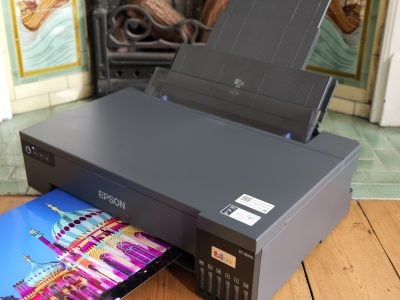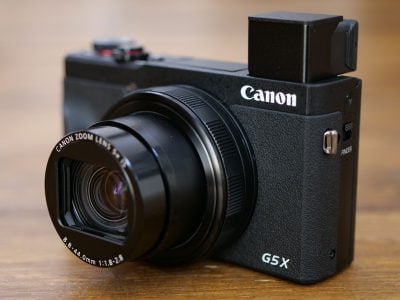Fujifilm X-E5 review
-
-
Written by Gordon Laing
Intro
The Fujifilm X-E5 is a mid-range mirrorless camera with a 40 Megapixel APSC sensor, viewfinder and built-in stabilisation. It’s available in silver or black and if you’re thinking it looks a lot like an X100 VI, you’re not going mad. The X-E5 is essentially an interchangeable lens version of that camera, and Fujifilm’s even launched a new 23 f2.8 pancake lens to complete the look, albeit with an aperture that’s one stop dimmer.
Announced in June 2025, the X-E5 is available body-alone or in a kit with the 23 f2.8; the lens by itself will be available later in the year, but it’s a decent saving to get it in the X-E5 bundle.
Thanks to tariffs, it’s hard to compare prices of new launches against existing stock in the US, so looking at the UK instead, the X-E5 body is similarly-priced to the X-T50, while the bundle comes in about £50 less than an X100 VI. As you’ll discover they all share a number of features in common, so for many of us it’ll be about choosing the style that suits you best. I spent a few days with the X-E5 and will help you make that choice in the video below, but if you prefer to read the written highlights, keep scrolling!
In terms of general specs, the X-E5 is essentially an X-T50 in a different body shape, and both share a similar price too, at least in the UK and Europe. In its favour the X-T50, has a popup flash, more detailed screen and a fully Auto mode with Auto subject detection that’s missing on the X-E5. Meanwhile the X-E5 counters with a shorter height and a screen which angles up and down further. But these aside, I’d say the choice is mostly down to styling between them, and if the X100 series has proven anything it’s that the flat-topped rangefinder style is very much in fashion.
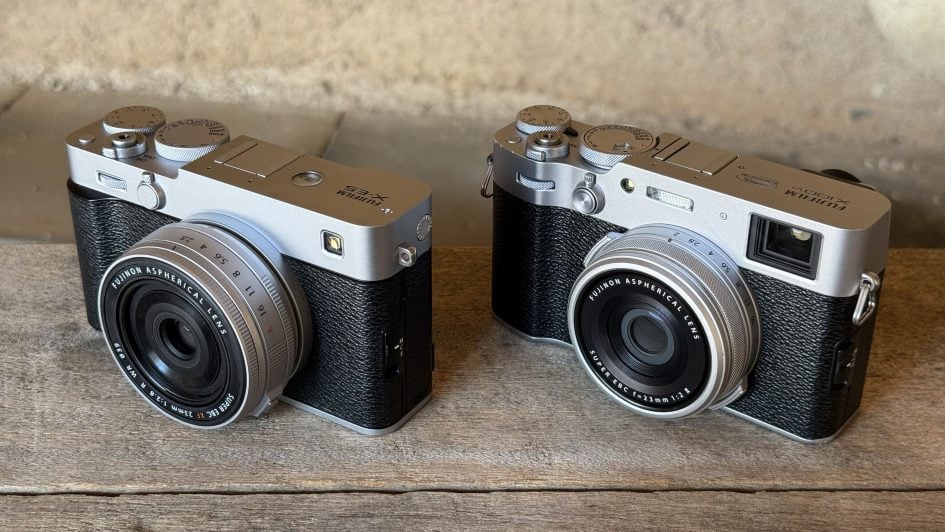
Above: Indeed the X-E5 and XF 23mm f2.8 lens are unashamedly designed to look and feel as much like an X100 as possible, but with the benefit of interchangeable lenses. Place them side by side with the X-E5 on the left and the latest X100 VI on the right and you’ll see just how similar they are. The X-E5 body measures 125x73mm and 39mm thick or 33mm at its thinnest point. It weighs 445g with a battery, or 535g with the 23 2.8 lens. Compare that to the X100 VI, which is the same thickness at its thinnest point and just two mm wider and taller. Meanwhile at 521g including battery and the fixed lens, it’s a barely noticeable 14g lighter.
So in terms of size and weight, Fujifilm has created an interchangeable lens camera that’s almost identical to the X100 VI, although as you’ll discover, there are a number of other feature differences to weigh-up beyond simply fixed vs swappable lenses.
In its favour, the X100 VI has a lens that’s one stop brighter, a built-in flash, and a hybrid viewfinder with both a higher resolution EVF and an optical mode. The screen is also more detailed. The lens has a built-in four stop ND filter, the mechanical bursts are a little faster and the leaf shutter is not only quieter, but can sync the flash all the way up to 1/4000. Add a lens accessory and the X100 VI will also become dust and splash resistant. That’s rather a lot of benefits to the X100 VI for much the same money, and many will be disappointed not to find weather proofing, a flash or a higher resolution viewfinder on the X-E5.
But in its favour, the X-E5 does have a screen that angles up to face you or 90 degrees down, a UHS-II card slot that’s quicker to flush the buffer, a dedicated Film SIM dial, the chance to talk directly to the latest Bluetooth instax Link printers, more customizable zone AF shapes, a simpler viewfinder display mode, and a more common 3.5mm mic input.
Some of these will result in eye-rolls, but no-one can argue with the flexibility of an interchangeable lens mount. This is the X-E5’s trump card, allowing it at one moment to mimic the portability of an X100 but with the choice of either a 23 or 27 pancake, or reach as long or wide as you like with the full range of X-mount lenses at your disposal.
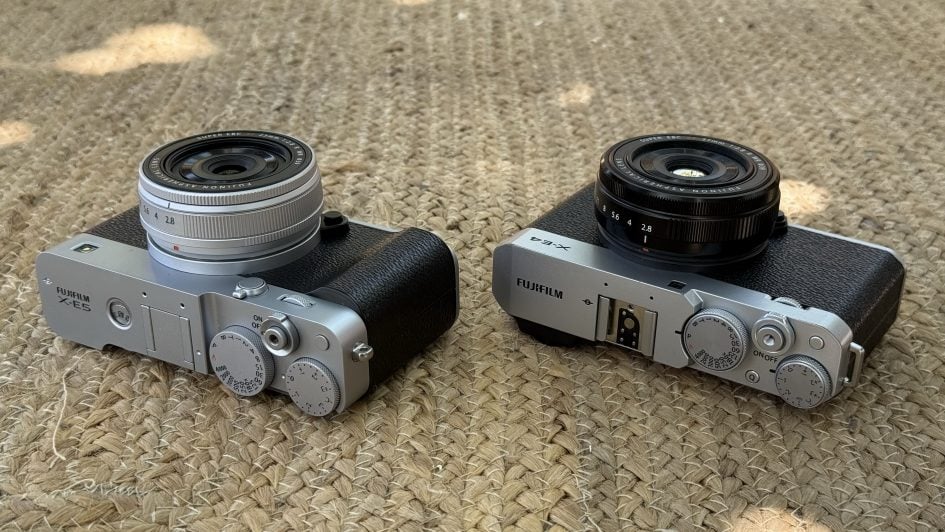
Above: now, here’s the X-E5 on the left, but this time with the previous X-E4 on the right. It’s been four years since the X-E4 and to be honest I wondered if it would return, but here it is with the latest sensor, built-in stabilisation and X100 styling, albeit with a price hike as a result. It’s gone from being one of the more affordable models in the series to mid-range.
At first glance the big physical change between the X-E5 and its predecessor is the addition of a grip on the front, which makes it more comfortable to hold. There’s also a rear control dial. You’ll also notice the logo in the upper right has been replaced by the AF assist lamp, almost looking like a small viewfinder window. In its place on the left is a new lever inherited from the X100 series, but in the absence of an optical viewfinder, this functions more like the control on the GFX100RF.
It’s all fully customisable, but by default a short push to either side cycles through the digital zoom crops, along with how they’re viewed during composition. For example you can fill the screen or EVF with the magnified area, or view it as a smaller rectangle surrounded by a border that effectively lets you preview what’s about to enter the frame, a little like an optical rangefinder. You’ll note that like the X-E4, there’s sadly no built-in flash. This is an advantage of both the X100 and X-T50.
At first glance the aluminium top panel looks similar to the X100 series but look again and there’s a couple of differences. Most obviously there’s a new recessed dial on the left side dedicated to adjusting Film Simulations, with six fixed settings peeking through a small window for Provia, Velvia, Astia, Classic Chrome, Reala ACE and Acros, along with three custom positions. I like the design as it doesn’t replace an existing dial, nor spoil the otherwise flat top left surface.
From the menus you can choose the filter type for ACROS, as well as assigning any of the other Film Simulations, like Sepia, Eterna or Nostalgic Negative to the three custom FS positions. You also now have the chance to apply your own recipes to these three custom positions which is a really nice feature on the X-E5.
In the middle is a hotshoe with pins for an external flash and holes in front for the built-in microphones. Again there’s no built-in flash. To the right is a dedicated shutter speed dial which lacks the lift-up ISO adjustment of the X100. It provides manual access to speeds from one second to 1/4000 in one stop increments, while turning it to T lets you use the rear thumb dial to access up to 180,000 with the electronic shutter or as long as 15 minutes without the need for Bulb timers or menus. Bulb is available if you prefer to trigger by hand with a cable release.
Eagle-eyed Fujifilm followers will notice a new P position on this dial, indicating Program mode – functionally this works the same as putting both the shutter dial and lens aperture ring to A, so it’s only a mild shortcut. Unlike the fully Automatic mode on the X-T50 though, this doesn’t unlock Auto subject detection. In fact this isn’t an option on the X-E5 at all.
To the right is a dedicated exposure compensation dial which still doesn’t lock and may turn when you remove it from a tight bag, so be warned. Between them is the same threaded shutter release with a power collar switch as the X100.
Meanwhile there’s small dials on the front and rear, both with push to click functions. By default the front finger dial adjusts the ISO sensitivity, but can be reassigned to, say, exposure compensation or Film SIMs if their dedicated dials are set to Custom. Meanwhile the rear dial adjusts the shutter speed by default, while pushing it will punch-into the image to check focus or details. Again it’s customisable.
Round the back, the X-E5 looks a lot like the X100 series, albeit with a smaller, round viewfinder eyecup. Like that model, you can navigate using the touch screen, or a small but tactile joystick.
The viewfinder is an EVF only, so lacks the hybrid optical mode of the X100 series. Personally while I’m impressed by the OVF on the X100, I rarely use it in person, so I’m happy to compose electronically. The X-E5 does however inherit the X-T50’s viewfinder spec, so you’re getting a 2.36 million dot OLED with 0.62x magnification. In contrast the latest X100’s boast a more detailed 3.69 million dot panel, albeit with much the same magnification.
At first I was disappointed Fujifilm didn’t use a higher res EVF, but to be honest the fairly modest magnification means I didn’t actually notice much difference between it and the X100 VI in practice. I only spotted it on very fine or slightly diagonal lines when I was really looking. In a fun new feature though, the X-E5 offers an alternative simple view in the EVF which removes most of the information to leave the basic exposure details in red at the bottom, with a needle on the right side to indicate over or under-exposure.
Strangely for a camera that inherits various specs from recent models, the X-E5 is equipped with a fairly coarse screen resolution of just 1.04 million dots. Compare that to 1.62 million dots on the X100 VI and X-E4, or 1.84 on the X-T50. Again I didn’t notice it being glaringly low-res in practice, but it is a disappointing decision at the price.
I am however pleased to report the X-E5 inherits the more flexible screen articulation of the X-E4, angling up beyond the 90 degree limit of the X100 and X-T50 to completely face-forward for selfies or vlogging, a key benefit over those models without the fuss of a side-hinge. It’ll also angle down lower too beyond the usual 45 degrees or so to almost 90, making it easier to frame when pointing down.
Moving on, the focus mode switch has been moved to the left side like the X100 series, and this is where you’ll also find the same ports as the X-T50 – so a 3.5mm mic input that’s more useful than the 2.5mm on the X100, USB-C and Micro HDMI. You can use the X-E5 as a standard USB webcam, and the port also doubles as a headphone jack using the supplied adapter.
Turning to the underside you’ll notice a Bluetooth button in one corner, and a tripod thread that’s only slightly off-axis. Meanwhile like the X100, the battery and card share the same compartment, with the X-E5 unsurprisingly powered by the same NP-W126S. In real-World use, I was getting about 250 shots and a few minutes of video per charge. As you’d expect there’s a single SD slot, but at least like the X-T50 it supports faster UHS-II cards and I’ll talk about bursts in a moment.
Before moving on, I wanted to mention again a very welcome feature in the wireless menus that like the recent X half, finally brings direct instax printing back to the X-series over Bluetooth. This means it’ll directly talk to all the current instax Link printers including the Wide, Square and Mini, although like the X half, only the Mini Link 2 and 3, not the original version. I’d expect this to become a standard feature going-forward, but who knows if they’ll equip older models with a firmware update.
Now for imaging, with the X-E5 sharing the same 40 Megapixel APSC sensor as most models in the current lineup including the X-T50, X-T5, X-H2 and X100 VI. And like all those models, the X-E5 also includes built-in sensor shift stabilisation, or IBIS for short, I believe using the same unit as the X-T50, but with an improved algorithm claiming up to seven stops of compensation in the middle.
In my tests with the X-E5, I personally only experienced around four stops of compensation, coincidentally the same I measured on the X-T50, while on the X100 VI, I managed five or six stops. But it’s still a highly valuable feature and one that lets you deploy lower ISOs in dimmer conditions for cleaner results.
And while it’s stating the obvious, the major benefit of the X-E5 over the X100 series is the chance to swap lenses. Knowing many potential buyers will be wanting to mimic the look and coverage of the X100, Fujifilm launched a new XF 23mm f2.8 pancake prime lens alongside the X-E5, which shares a similar size and weight to the existing 27mm f2.8.
Sure it’s a stop dimmer than the X100’s built-in lens, and won’t focus as close, but it really turns the X-E5 into a camera that looks a lot like the X100, but with the chance to swap lenses, and that will be enough to sell it to many people.
To find out how the depth of field varies between the new 23 f2.8 and the X100 VI at f2, I photographed a still life scene with them at their maximum apertures. Note the subject distance was exactly the same here, but due to optical differences and breathing, you’re seeing different coverage and subject sizes. But it still shows you what you’ll get from each product from the same distance.

Above, as expected, the 23 f2 lens on the X100 VI is delivering a shallower depth of field with larger bokeh blobs and softer rendering too.

In comparison the bokeh blobs from the new XF 23 f2.8 above are inevitably smaller here, but also have more defined edges. I wouldn’t go as far as to describe it as busy, but it’s definitely less creamy than the X100.
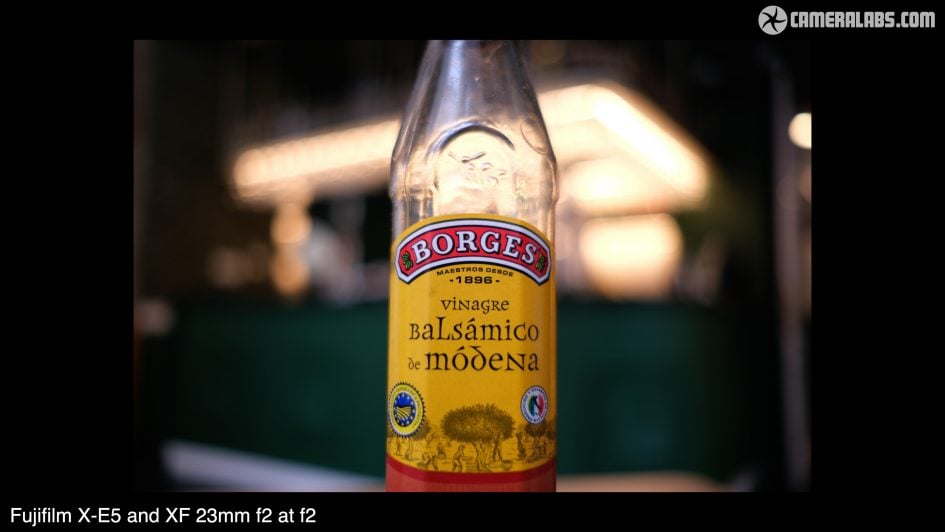
Remember you can alternatively fit the older XF 23 f2 for similar bokeh on the X-E5, as seen above, but it is a physically much bigger lens. I’ll try to make a more detailed video about the XF 23 f2.8 soon.
As for quality options, the X-E5 shares essentially the same menus as other models with the same sensor and processor, so you’re getting five different aspect ratios, three types of RAW files, the chance to swap JPEG for HEIF and the usual image effects including Colour Chrome and Grain. Note there isn’t a panorama crop like the GFX models, but there is the usual panoramic option on the drive menu, albeit with the usual varied results.
The resolution, noise and dynamic range are all the same as previous models with the same sensor and processor, so no need to present them all again here. Check out my X-T50 review for a detailed run-down.
The drive menu is where you’ll find the burst options, which appear to be inherited from the X-T50, so that’s a top speed of 8fps with the mechanical shutter, or up to 20 with the electronic shutter, albeit anything faster than 13fps is cropped by 1.29x to 24 Megapixels. There’s also pre-burst options.
In my tests with the mechanical shutter, I fired-off 20 uncompressed RAW files in 2.33 seconds for a speed of around 8.5fps, with the buffer taking about seven seconds to fully write to a fast UHS-II card. This matched what I measured with the X-T50.
Interestingly the X100 VI enjoys faster 11fps mechanical bursts, but is limited by a UHS-I slot, which took 17 seconds to clear a burst of 17 uncompressed RAWs in my tests.
There is however another difference between their shutters. The X-E5 employs a focal plane shutter like the other interchangeable lens models in the series. Like the X-T50, this means a top mechanical shutter of 1/4000 and a fastest flash sync of 1/180.
In contrast the X100 employs a leaf shutter that may share the same top mechanical speed of 1/4000, but will sync the flash right up to that. It’s also almost silent in operation versus the slightly louder thunk of the X-E5.
That said, as someone who shoots a lot with an X100, I actually quite liked the shutter sound and feel of the X-E5, providing more feedback while still remaining pretty discreet.
Moving onto autofocus, the performance and options are also essentially unchanged from models like the X-T50, so you’re getting subject detection for animals, birds, bikes, cars, planes and trains on one menu and humans annoyingly still on another, and again sadly not the Auto option of the X-T50.
Dig a little deeper though and you’ll see the X-E5 now has fully customisable Zone AF areas with no restrictions, so you can make them tall and thin, long and narrow, or literally any rectangle or square inbetween.
Moving onto video, the X-E5 also shares much the same options as the X-T50, so you’re getting 1080 or 4k from 24 to 60p, 6.2k up to 30p, and High Speed 1080 options up to 240p. Note like the X-T50, frame rates of 50 or 60p are cropped by 1.1x, while the 4k HQ, 6.2k and High Speed modes are all cropped by 1.23x.
As before there’s a bunch of encoding options including H.264 in 8-bit, H.265 in 10-bit, and a choice of bit rates from a maximum of 200Mbit/s, down to a new lower setting of just 8Mbit/s. I didn’t have time to do any overheating tests, so will update this review when I do.
Check prices on the Fujifilm X-E5 at B&H, Adorama, WEX UK or Calumet.de. Buy used gear from MPB. Sell your used gear to MPB. Alternatively get yourself a copy of my In Camera book, an official Cameralabs T-shirt or mug, or treat me to a coffee! Thanks!
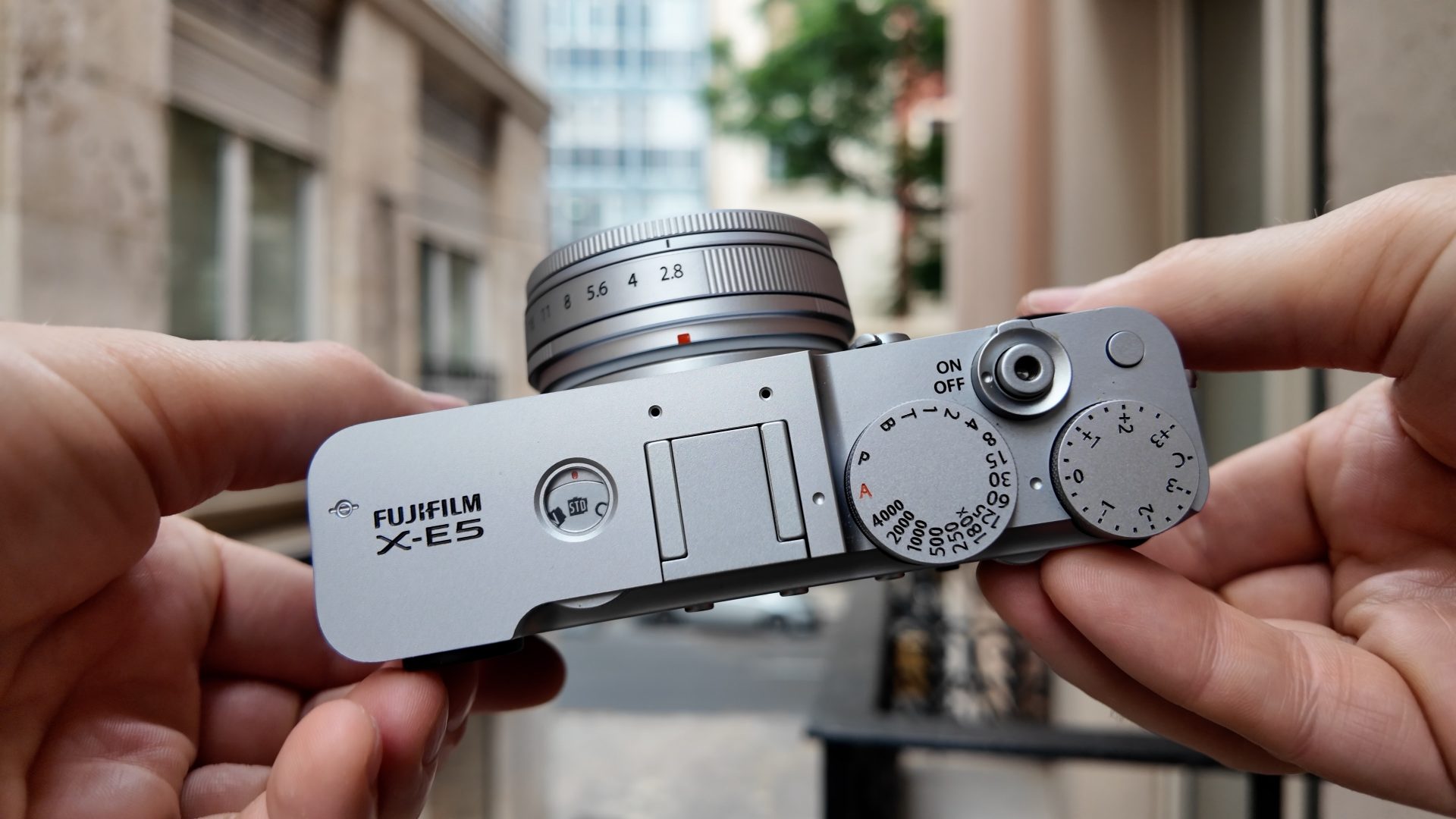
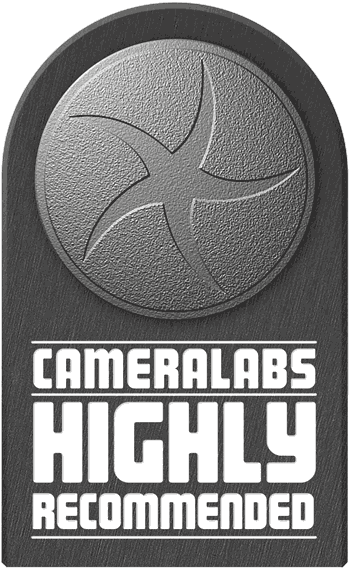 The Fujifilm X-E5 becomes one of the most attractive mid-range mirrorless cameras around in terms of both style and specs, essentially repackaging the X-T50 into a body that mimics the enormously popular X100. Indeed that might be all you need to know: it’s an X100 with the chance to swap lenses. Fit the new 23 f2.8 lens and many won’t be able to tell the difference. Fit the 27 2.8 pancake and you have a custom X100 with slightly tighter coverage. Switch these out for an ultra wide or telephoto and you can do things the X100 can only dream of. For most people it’ll be the more sensible choice. But like many things in life it’s not quite that simple. The X100 VI has a number of benefits, including a brighter f2 aperture if you’re matching the lens size, an optical viewfinder, more detailed electronic viewfinder and screen, built-in flash, ND filter, faster mechanical bursts and a leaf shutter that’s not only quieter but can sync a flash up to 1/4000. It can also be made weather-proof and some of us actually enjoy the restriction of a fixed lens. But I suspect a camera with much the same looks as an X100 and the flexibility of an interchangeable lens mount will outweigh any downsides for most people. Bottom line? The X-E5 is likely to be another big hit for Fujifilm and relieve some of the strain from the X100 VI queues. Best get your order in sooner than later.
The Fujifilm X-E5 becomes one of the most attractive mid-range mirrorless cameras around in terms of both style and specs, essentially repackaging the X-T50 into a body that mimics the enormously popular X100. Indeed that might be all you need to know: it’s an X100 with the chance to swap lenses. Fit the new 23 f2.8 lens and many won’t be able to tell the difference. Fit the 27 2.8 pancake and you have a custom X100 with slightly tighter coverage. Switch these out for an ultra wide or telephoto and you can do things the X100 can only dream of. For most people it’ll be the more sensible choice. But like many things in life it’s not quite that simple. The X100 VI has a number of benefits, including a brighter f2 aperture if you’re matching the lens size, an optical viewfinder, more detailed electronic viewfinder and screen, built-in flash, ND filter, faster mechanical bursts and a leaf shutter that’s not only quieter but can sync a flash up to 1/4000. It can also be made weather-proof and some of us actually enjoy the restriction of a fixed lens. But I suspect a camera with much the same looks as an X100 and the flexibility of an interchangeable lens mount will outweigh any downsides for most people. Bottom line? The X-E5 is likely to be another big hit for Fujifilm and relieve some of the strain from the X100 VI queues. Best get your order in sooner than later.